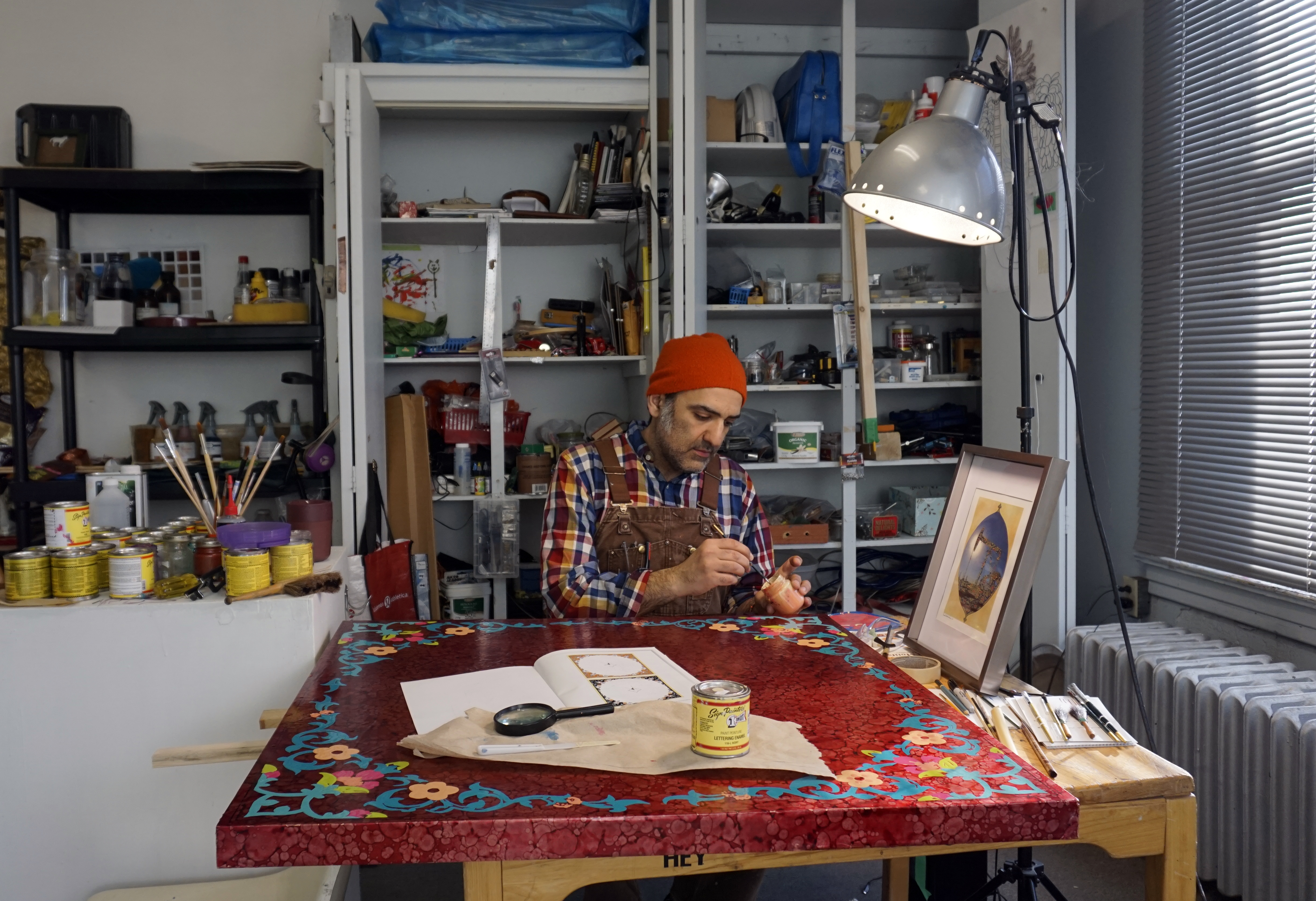Research in Action: Answering the call of the life-giving waters of Gichigami
Published in The Chronicle Journal Tuesday, February 28, 2023.
BY JULIO HELENO GOMES
When the Thunder Bay Art Gallery opens the doors to a new building on the waterfront, visitors will be treated to an expansive exhibition space, the centrepiece of which will be pieces from more than two dozen artists inspired by the proximity to Lake Superior. Among the contributors to this large-scale series will be two Lakehead University faculty members and four sessional lecturers.
Along with being a challenge for the artist, this project will also have significance for the community, since these commissioned works will form the Art Gallery's first exhibition near the water's edge at Prince Arthur's Landing.
“It all reflects back on Lake Superior and what happens to us when we're by the shore, which greatly affects and inspires every one of us,” says Sam Shahsahabi, a Lakehead University professor.

A multidisciplinary artist, Shahsahabi is joined by colleague Roly Martin and several former students now employed as contract lecturers.
This series is called Madaabi, an Anishnaabemowin (Ojibway language) term for “s/he/they goes down to shore.” Madaabi encompasses the themes of people, place and land.
“At the heart of this project is the truth that water is life,” says Penelope Smart, the Gallery's curator.
The project, valued at $375,000, is funded by the New Chapter Grant from the Canada Council for the Arts. A total of 27 artists have been invited to produce original works that spring from this concept of the life-giving waters of Gichigami. The lineup is diverse and includes Indigenous, non-indigenous, mid-career, young, emerging and established artists. Most of them are local but some nationally-renowned artists that have connections to the region will also contribute.
The works will explore fundamental issues, such as environmental degradation, protection of Indigenous land rights, and traditional knowledge. The methods will feature carving, basketry, ceramics, sculpture and painting.
“The range and use of media are likewise varied, expansive, and as dynamic as the waves and shores of this powerful lake,” Smart says.
Martin's sculptural installation uses thousands of steel rods that have been shaped and welded to form a life-sized boat with oversized oars reaching out and connecting to the land.
Shahsahabi has finished a two-part piece, based on water memory and how it can be preserved through sacred geometry. There are two elements to it: one is copper, with acid and enamel representing the Sleeping Giant. Copper was traditionally used by Indigenous Peoples in the Middle East as a healing alloy. The second part is a representation of the reflection of the Sleeping Giant in the lake, done in encaustic. Shining and buffing both the beeswax and copper can create a reflective surface. The effect is that viewers will see a reflection of themselves, hopefully inspiring them to also consider Indigenous peoples' attachment to this landmark and what they have witnessed throughout history.

“It's very layered in its meaning and interpretation of what this Lake Superior means for us as a small community in Northern Ontario,” Shahsahabi says.
It also has a personal meaning. Shahsahabi was born in Iran, where he worked as an art instructor, graphic designer and cartoonist. After obtaining a master's degree from York University he embarked on a teaching career, living in Elliot Lake and Sudbury before coming to Thunder Bay in 2009. He now serves as chair of Lakehead's Visual Arts department. His multi-layered work, then, considers what this sacred body of water means to him as an immigrant -- someone with two homes and, in essence, two lives.
“The two parts of my artwork reflects back on this duality, spiritually having two homes,” he says. “The top part is reflecting the land I left behind, the bottom part is reflecting the land where I have arrived.”
Julie Cosgrove is another contributor. A graduate of the Visual Arts program, she has been a contract lecturer in the department since 2012. Her piece for Madaabii will consist of four paintings on canvas, “journeying in Northern waters,” exploring the relationship between water and the creative process. The inspiration was a reproduction of the historical map of Lake Superior and Hudson Bay created in 1814 by David Thompson, a surveyor and cartographer for the North West fur trade company.
“Having worked in the outdoor industry as a canoe guide in this region, looking at this map resonated with me, not just by the magnitude of the project but also in thinking about how some of the waterways of that map are relatively unchanged and our connection to this place is still dependant on the water,” she explains. “My intention is to try to suggest these ideas of navigation and respect of the natural environment using the same water in the process of painting.”
The project is still a few years away from public viewing. Construction on the new art gallery will get underway shortly. The $38-million facility, expected to open in 2025, will feature an event hall and outdoor art displays, as well as double the size of the exhibition spaces and provide a larger collections storage vault. The permanent collection now boasts 1,600 works from local and regional artists.
The gallery's curator hopes the new facility will be a platform to contemplate new ideas through art, and that the lake-informed perspectives of Madaabii will make Thunder Bay a major arts and culture destination in Canada.
“We’re thrilled that so many artists, including those who are part of the LU Visual Arts community, have an unparalleled opportunity to tell a story of this place through their new artworks,” Smart says. “This project also adds new and important works by many regional artists to our renowned Permanent Collection.”
Research in Action highlights the work of Lakehead University in various fields of research.

